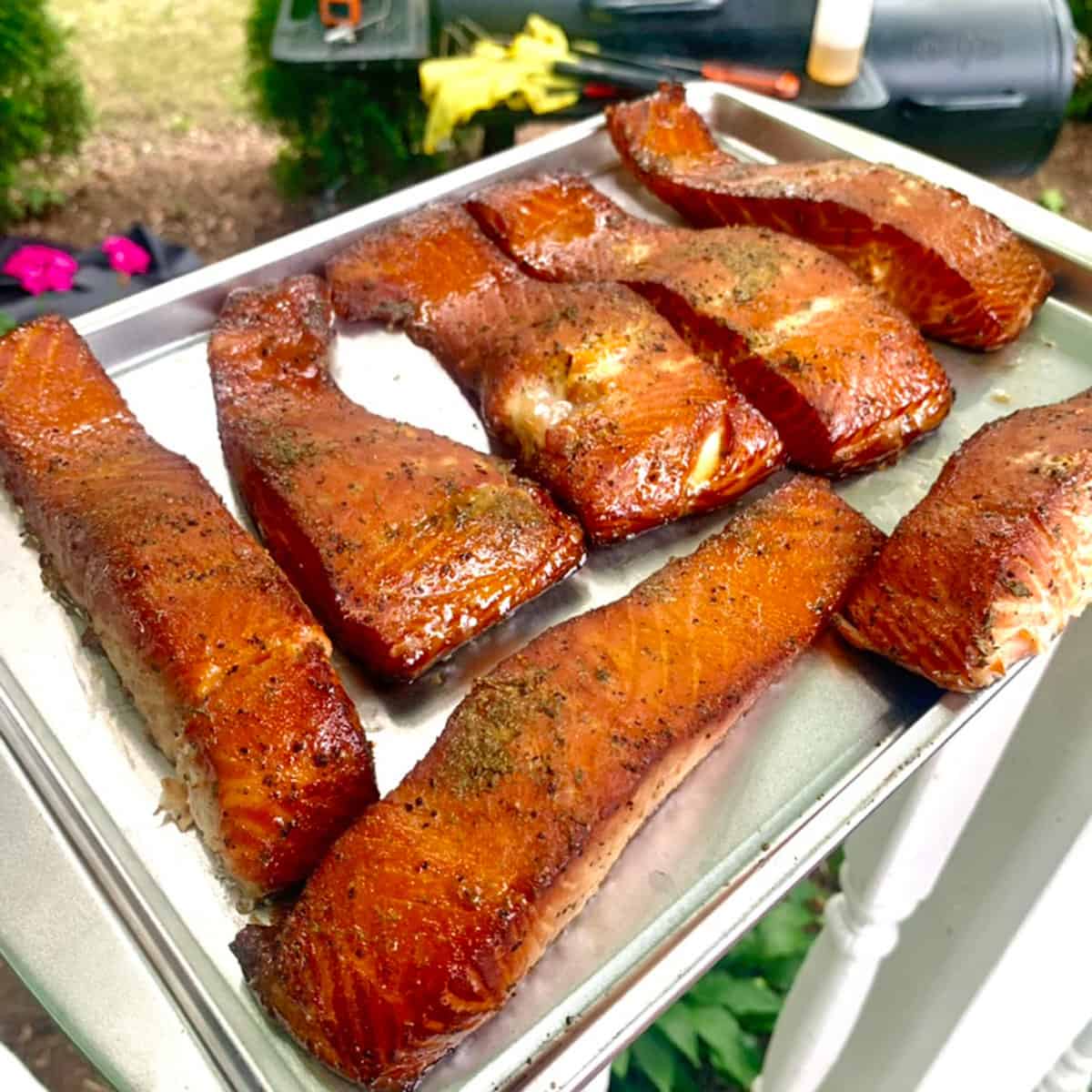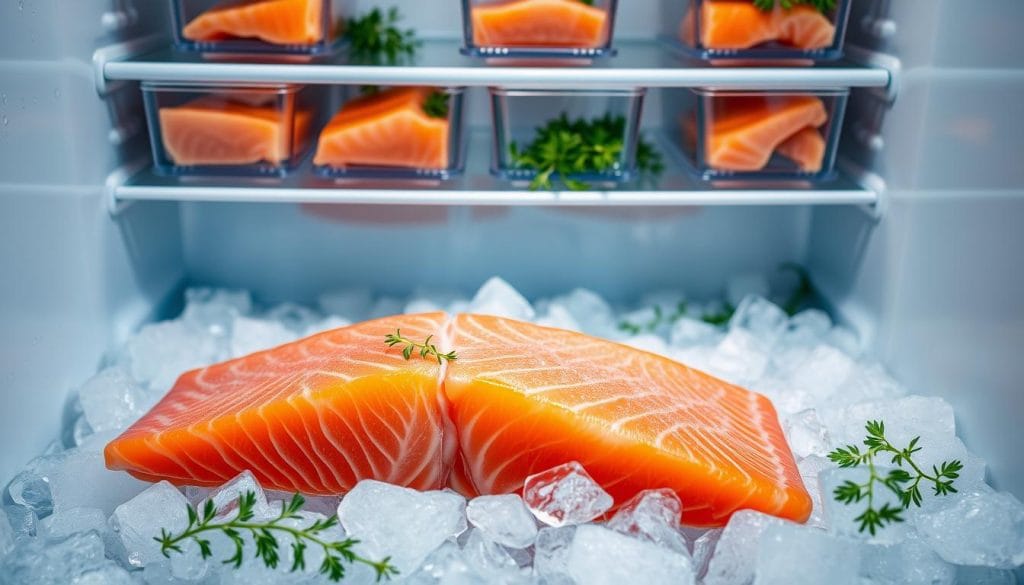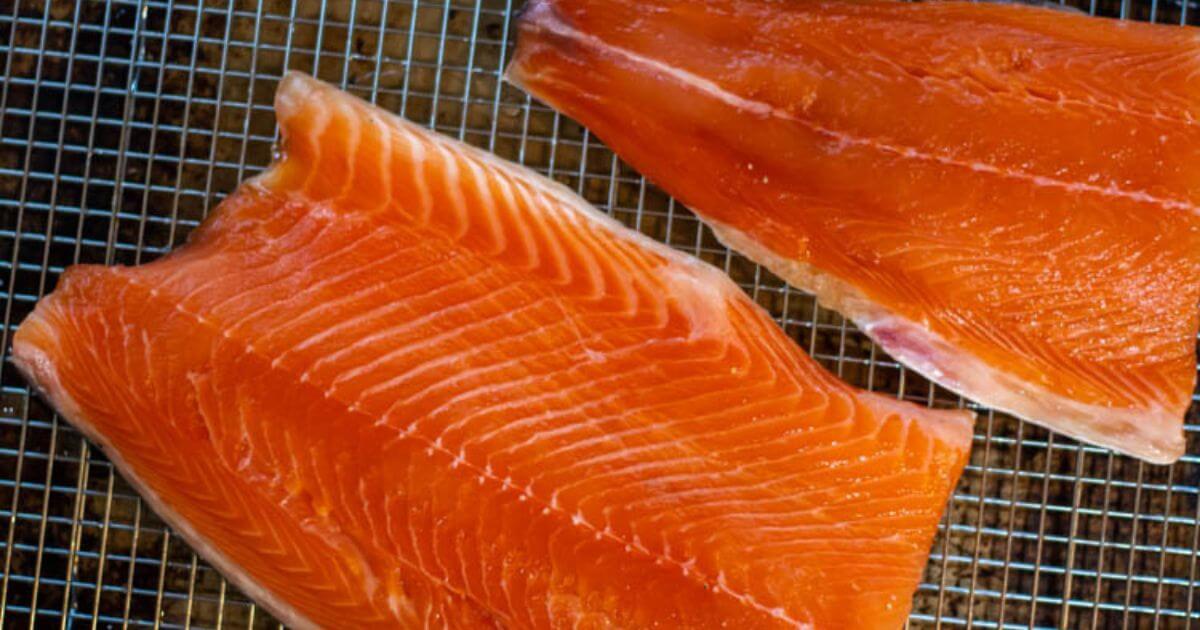
Understanding the Shelf Life of Salmon
Definition of Salmon Shelf Life
The shelf life of salmon refers to the period during which the fish remains safe to consume while still retaining its quality and flavor. Understanding this time frame is crucial for anyone who loves this delectable seafood. Fresh salmon is incredibly perishable and generally has a short shelf life compared to other proteins. On average, raw salmon lasts only 1–2 days in the fridge, while cooked salmon can extend its lifespan to 3–4 days.
However, it's important to note that packaging plays a significant role. For instance, vacuum-sealed salmon can last 1–2 weeks if unopened. Once opened, it should be consumed within 1–2 days to ensure safety. Smoked salmon, on the other hand, can last longer—around 1–2 weeks when unopened, but it's recommended to enjoy it within 5–7 days after opening.
Factors Affecting Salmon Freshness
Several factors influence how long salmon can stay fresh in the fridge:
- Storage Temperature: Salmon should always be stored at or below 40°F (4°C). Higher temperatures can accelerate spoilage, increasing the risk of foodborne illness.
- Packaging: The way salmon is packaged directly impacts its shelf life. Vacuum-sealed salmon can last longer due to reduced exposure to air, which prevents oxidation and bacterial growth.
- Moisture Control: Excess moisture can promote the growth of bacteria. Proper wrapping, such as using plastic wrap and then aluminum foil, can help to keep moisture in check.
- Exposure to Air: Air exposure leads to oxidative reactions that can degrade the fish's quality. Keeping salmon tightly sealed in containers can prolong its freshness significantly.
- Type of Salmon: Different types of salmon have varying shelf lives. For example, commercially smoked salmon tends to have a longer shelf life than fresh, raw salmon due to the curing process.
- Quality at Purchase: The freshness of the salmon when purchased affects its shelf life. Always select bright, firm fillets free of any off-putting odors.
By paying attention to these factors and understanding salmon's shelf life, individuals can ensure that they enjoy this delicious fish at its best while minimizing the risk of spoilage. Remember, when in doubt, always use your senses—sight and smell are your best allies in determining whether salmon is still good!

How Long Can Fresh Salmon Last in the Fridge?
Understanding how long fresh salmon can last in the fridge is essential for anyone who loves this nutritious fish. With its numerous health benefits, particularly its omega-3 fatty acids, salmon is not just delicious but also a smart choice for a balanced diet. However, knowing how to handle it correctly can help ensure that it remains safe and flavorful.
Recommended Storage Time for Fresh Salmon
Fresh salmon is highly perishable, and proper storage is key to extending its shelf life in your fridge. Here’s a breakdown of how long fresh salmon can be kept:
- Raw Salmon: Typically lasts 1–2 days in the fridge. It's crucial to act quickly after purchasing to enjoy the best taste and quality.
- Cooked Salmon: If you have some leftover cooked salmon, it can safely last for 3–4 days if stored correctly.
To maximize freshness, start by rinsing the raw salmon under cold water, then pat it dry with a paper towel. Wrap it tightly in plastic wrap, followed by aluminum foil to keep moisture in and prevent air exposure. Place the wrapped fish in the coldest part of your refrigerator, usually the bottom shelf.
It's also helpful to keep your fridge temperature around 32°F (0°C). A simple fridge thermometer can be a great investment to ensure your seafood stays fresh and safe to eat.
Signs of Spoiled Salmon
Even with the best storage practices, it's essential to be aware of signs that indicate your salmon has gone bad. Here are a few red flags to look for:
- Odor: Fresh salmon should have a mild ocean-like scent. If it smells overly fishy, sour, or ammonia-like, it’s best to discard it.
- Appearance: Fresh salmon boasts a vibrant pinkish-red color and a shiny appearance. If you notice any gray or dull patches, the fish may be past its prime.
- Texture: The flesh of fresh salmon should feel firm and spring back when pressed. If it becomes slimy or overly sticky, it is likely spoiled.
Keeping an eye on these indicators can save you from eating something potentially harmful. Always trust your senses. If you have any doubts about the freshness of your salmon, it's better to err on the side of caution and throw it out. Remember, enjoying salmon at its peak quality enriches not just your meal but your overall health as well.

Extending the Lifespan of Salmon
When it comes to enjoying fresh salmon, understanding how to extend its lifespan can save you money and help you enjoy this delicious fish for longer. With the right storage techniques, you can maintain the quality of salmon and savor its rich flavors over time, whether raw, cooked, or smoked.
Proper Storage Techniques
To keep your salmon as fresh as possible, proper storage is crucial. Here are some helpful tips:
- Wrap it Right: After buying fresh salmon, don't leave it in its original packaging if you plan to keep it for more than a day. Instead, rinse the salmon under cold water, pat it dry, and wrap it tightly in a layer of plastic wrap. Follow that with a layer of aluminum foil to reduce exposure to air, which can lead to spoilage.
- Temperature Matters: Ensure your refrigerator is set to 40°F (4°C) or below. Keep salmon in the coldest part of your fridge, usually the bottom drawer. This helps to slow down the growth of bacteria, maximizing freshness.
- Avoid Cross-Contamination: Store salmon separately from other foods, especially raw meats. If you have more than one piece, consider portioning them out and placing them in airtight containers or resealable bags, marked with the date.
- No Extended Room Temp: Salmon should not sit at room temperature for more than two hours. If you’re prepping for dinner, leave it in the fridge until you are ready to use it.
These simple storage guidelines can help keep salmon fresh for the maximum time recommended.
Freezing Salmon for Prolonged Freshness
If you find yourself with extra salmon or simply want to extend its life beyond the two-day fridge limit, freezing is an excellent option. Here’s how to do it properly:
- Seal It Up: Start by wrapping the salmon tightly in plastic wrap. Then, wrap it again in aluminum foil to prevent freezer burn. For added protection, place the wrapped salmon in a freezer-safe bag and make sure to suck out any excess air before sealing it. Too much air can lead to freezer burn and spoil the texture of the salmon.
- Label and Date: It’s essential to label your packages with the freezing date. Frozen salmon can maintain its quality for up to three months. If vacuum-sealed, it can last as long as six to eight months, preserving both its quality and taste!
- Thawing: When you're ready to use your frozen salmon, the safest way to thaw it is in the refrigerator overnight. Alternatively, you can use a cold-water method or even a microwave, but be sure to cook it immediately after thawing to avoid any risk of bacterial growth.
By following these simple procedures, you can enjoy your salmon long after your initial purchase, preserving its nutritional benefits and delicious flavors. Enjoy cooking up a storm with fresh salmon whenever the mood strikes!

Ways to Utilize Leftover Salmon
After a delightful salmon dinner, it's common to have some delicious leftovers. Instead of letting that nutritious protein go to waste, consider the myriad of ways to enjoy your leftover salmon! With a little creativity, you can transform yesterday's dinner into a whole new culinary experience.
Creative Recipes for Leftover Salmon
Here are some tasty ideas to make the most of your leftover salmon:
- Salmon Salad: Flake your leftover salmon and mix it with Greek yogurt, diced celery, a squeeze of lemon, and seasonings for a delicious salmon salad. Serve it on a bed of greens or in a sandwich with your favorite toppings. It’s an easy and refreshing meal!
- Salmon Pasta: Toss flaked salmon into a creamy pasta sauce paired with spinach and tomatoes. Penne or fusilli works wonderfully! This dish adds a deliciously rich flavor to your dinner table.
- Salmon Tacos: Use the leftover salmon as a filling for tacos! Top with shredded cabbage, fresh cilantro, avocado slices, and a zesty lime dressing. These just might become your new favorite!
- Frittata: Add flaked salmon to a frittata for a protein-packed breakfast. Simply whisk together eggs, add vegetables like bell peppers and onions, then stir in the salmon. Bake it until golden for a quick, easy meal!
- Salmon Quiche: Incorporate the salmon into a quiche with spinach and cheese. Bake it in a prepared pie crust for a hearty brunch option or a quick lunch.
Tips for Reheating and Enjoying Leftover Salmon
To ensure that your leftover salmon stays delicious, follow these reheating tips:
- Gentle Heating: The key to reheating salmon without drying it out is to do it gently. Use low heat settings whether in the oven, stovetop, or microwave.
- Oven Method: Preheat the oven to 275°F (135°C). Place the salmon on a baking sheet, cover it with foil to retain moisture, and heat for about 15 minutes until warmed through.
- Microwave Method: If you're in a hurry, you can microwave the salmon. Place it on a microwave-safe plate, cover it with a damp paper towel, and heat it in 30-second intervals until warm.
- Skillet Method: Heat a little olive oil or butter in a skillet, and add salmon cooking on low for about 4-5 minutes or until heated through.
- Add Moisture: To revive dryness, pair your reheated salmon with a sauce or a squeeze of fresh lemon juice. It enhances flavor and keeps your meal enjoyable.
With these creative recipes and reheating tips, you can turn your leftover salmon into mouth-watering meals that are just as satisfying as your original dish. Enjoy experimenting with flavors and combinations, knowing you’re minimizing waste and eating well!

A Bergen County institution celebrating authentic Jewish cuisine since 1985. Our pastrami—brined for 14 days, smoked over applewood for 12 hours, and steamed to perfection—creates a melt-in-your-mouth experience that rivals Manhattan’s finest delis. Our rye bread is baked fresh daily using a century-old recipe from Poland. Featured in Food & Wine’s “Top 10 Delicatessens in America” and on Food Network’s “Best Thing I Ever Ate.” Chef Moshe Greenbaum, a third-generation deli master trained at the Culinary Institute of America, ensures every sandwich meets our exacting standards. No wonder our customers drive from three states away.
Leave a Reply